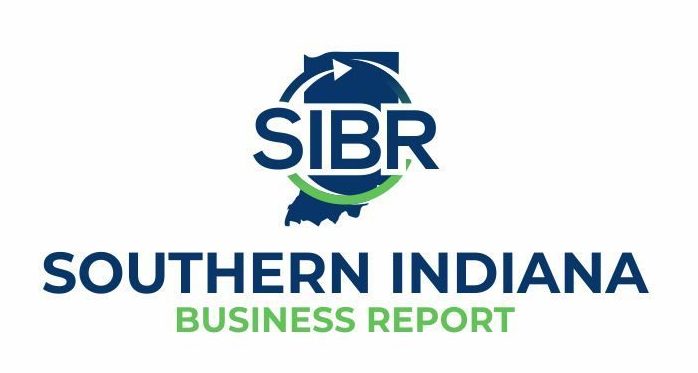By Michael Hicks | Ball State University
The 21st century has been terribly unkind to Indiana’s economy. Indeed, over the next few paragraphs I will lay out the case that it has been the worst two decades in the state’s economic history, and that prospects for the next two decades are even poorer.
I write this because I believe our political debate about tax and spending would benefit from greater honesty about the subject. I also want to make clear that it is an error to blame one political party or the other for the poor state of the Hoosier economy. Bad luck as much as bad policy has played a role. Adjudicating the past is helpful only in focusing on the present and future.
Today, Indiana has about 75,000 more jobs than we had in 2000, and about 155,000 more residents. But, over the same time, the Indianapolis metro area has about 190,000 new jobs and 200,000 new residents. So, not all of Indiana is doing poorly, and these bright spots blind many to the much broader troubles. Our growth is happening in just a few places, in one large metropolitan region. Everywhere else in the state is either stagnating or in decline.
The slow job and employment growth signals a poor economy, but it masks an even deeper problem. Most of Indiana’s job growth this century has been in low-wage work. In our largest industry, manufacturing, the only job growth this century has been among workers without a high school diploma. This is an appalling track record that should crush any suspicion that Indiana is having success in advanced manufacturing. Hoosier factories have a worse educational profile today than they did in 1998, the first year of this data source.
Of course, the educational attainment decline in manufacturing has other effects. After adjusting for inflation, wages among Indiana’s manufacturing workers are the same as they were in 1998. Wages for new workers are slightly lower over the same time. Worker productivity among Indiana’s factories grew at half the national rate since 2010, reflecting a structural shift away from a broad manufacturing economy. The job growth is coming at the bottom end of the educational and skill level, which bodes very ill for our biggest industry.
During the long recovery from the Great Recession, the largest job growth came among those without a high school degree. The national conditions could hardly be different. Nationwide, more than 8 in 10 new jobs have been to college graduates. So, Indiana is abruptly diverging from the national economy in education and skills. One consequence of this is that over the past decade Hoosier incomes have dropped more relative to the nation as a whole over than in any time in history.
These sort of changes do turn around overnight. There are simply no policy initiatives or fortunate economic conditions that would suggest the Indiana economy will begin to grow at or near the national average. We are behind, and we’re slowing down. So what happened?
Indiana entered the first part of the 21st century unprepared for a big loss of manufacturing jobs and the economic dislocation that accompanied it. There was very little of Indiana to recommend to businesses or residents. Taxes weren’t high, but public services were nothing to brag about. Heavy union presence made many places unpalatable to large employers. But, as the jobs left, taxes rose abruptly. By 2006, Hoosier manufacturers were paying the 38th highest taxes in the country, and homeowners were being clobbered by rapidly growing property taxes.
To be fair, the state’s policymakers were long warned about unfriendly business conditions, poor public services and high taxes. Economists in the 1990s were pretty clear about the state’s problems, but political leaders told themselves and their supporters happy stories and brushed aside the criticisms about deeper economic problems. By the mid 2000s, the loss of factory jobs and broad disruption provided an opening for major political change.
Governor Daniels swept into office to accomplish just that. He reformed taxes, pushed state and local government to perform better and gave Hoosiers school choice. He set ambitious standards for college completion and per capita income growth. My research concluded that Indiana suffered a far easier Great Recession than it should have because of these policies.
The Pence Administration remained fiscally prudent, but also added policies that acknowledged remaining challenges. He expanded Medicaid through the Healthy Indiana Plan (HIP), and he instituted one of the more thoughtfully development programs in the nation – the Regional Cities Initiative. Governor Holcomb continued these policies, including a major new adjustments to the regional cities work in the READI grant.
Somewhere along the way something soured.
First, there was a push to introduce more vocational education options for Hoosier high school students. This was smart in theory; college is not for everyone, and a high school curriculum that prepares only for college will shortchange many students. However, in practice, it was a grave mistake that saw vocational education choices pushed to kids as young as 11 or 12. The aspirational goals of higher education set by Mitch Daniels were so diluted that we saw a rapid decline in the share of our kids heading off to college.
We are now in Year Five of that decline, which was exacerbated by COVID. Not all the impact was caused by bad messaging to kids or curriculum changes. Beginning in 2010, spending on education began to decline. It dropped in inflation-adjusted terms and on a per student basis, both for K-12 and post-secondary education. From 2010 to 2019, state spending on education shrank from 3.24% of our Gross Domestic Product to 2.76%.
If we spent the same share of GDP on education that we did in 2010, our budget would be $1.8 billion higher per year. And, the state just passed a tax cut that will trim a further $500 million per year from schools and colleges. It is worth noting that spending on TANF and Medicaid rose by 50% over the same time. We are good at spending money to treat the symptoms of poverty, but doing poorly at spending to treat the cause of poverty.
Together, I believe the modest push away from college preparation and the much larger budget cuts set the stage for more problems. As readers of this column know, the quality of public schools is the prime element of relocation decisions by families. In 2018, the Republican Congressional Joint Economic Committee published a study of brain drain that revealed Indiana was in the midst of its worst decade in history. There’s no evidence of improvement. And, as Indiana begins the COVID recovery, we do so with an economy with worse underlying basic conditions, which bodes poorly for the decades to come.
Michael J. Hicks, PhD, is the director of the Center for Business and Economic Research and the George and Frances Ball distinguished professor of economics in the Miller College of Business at Ball State University.



